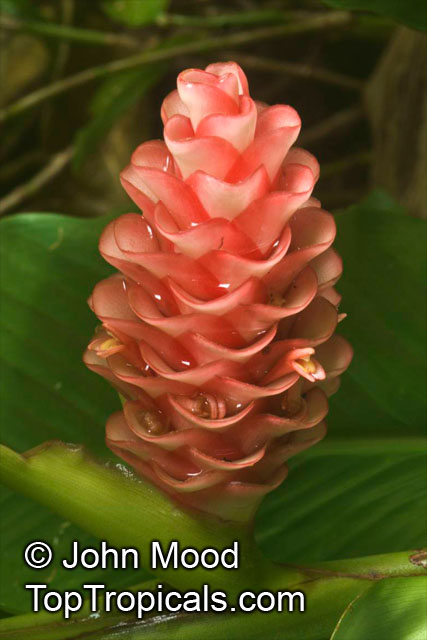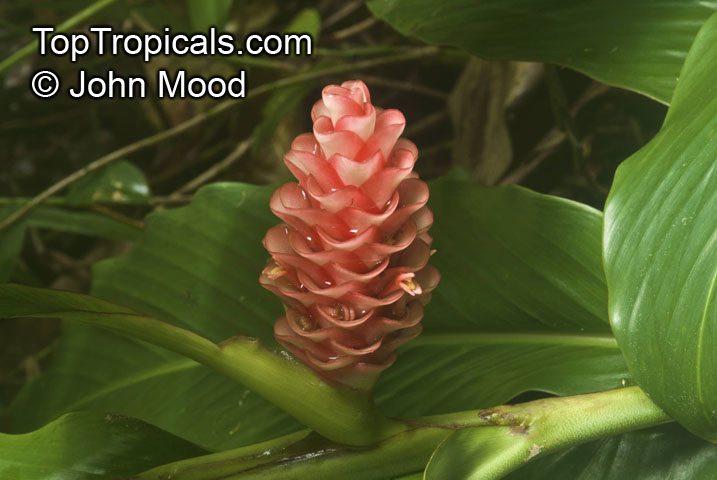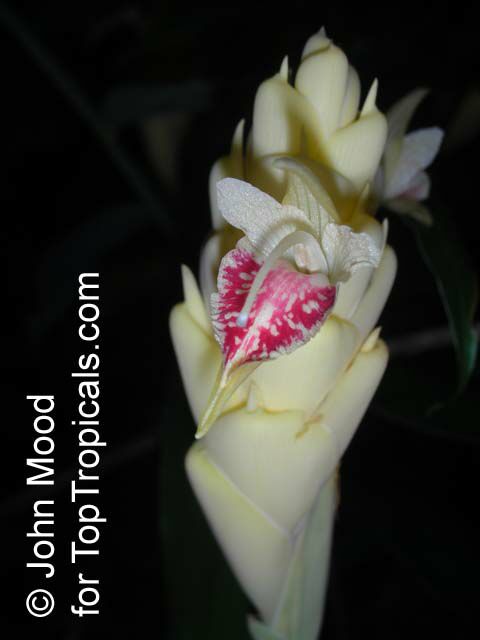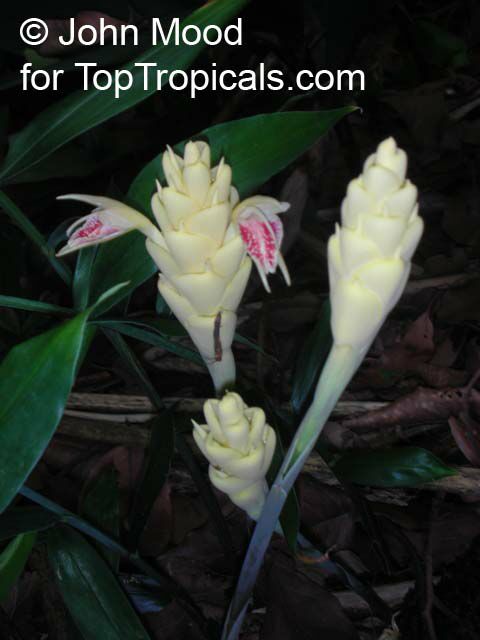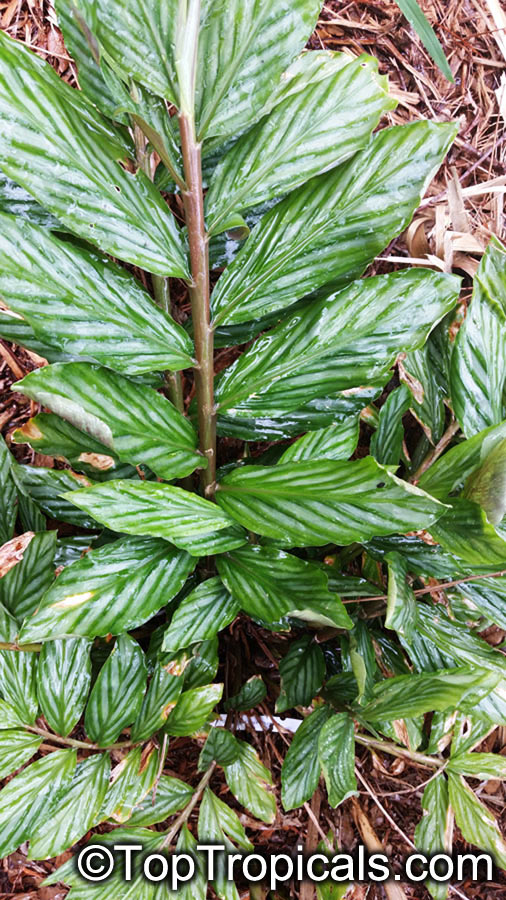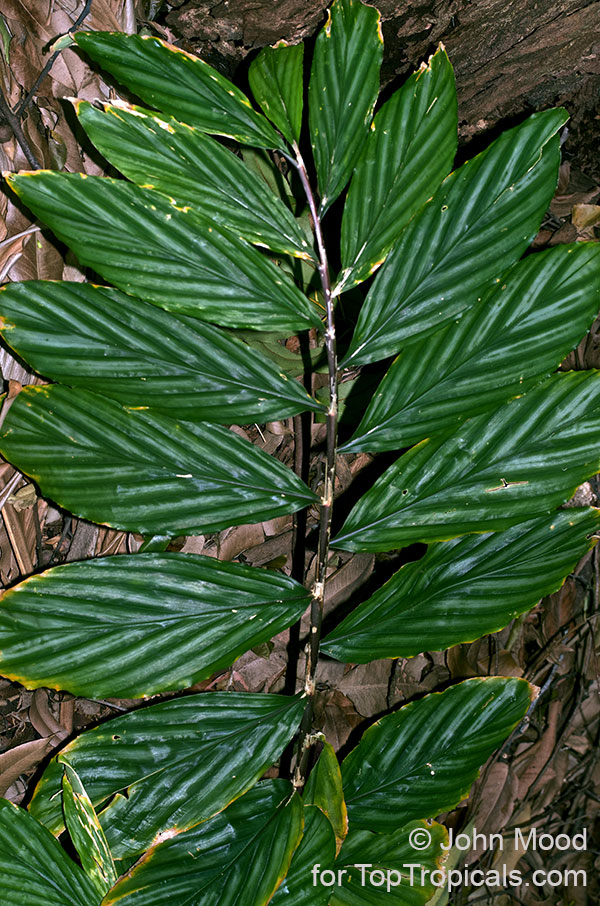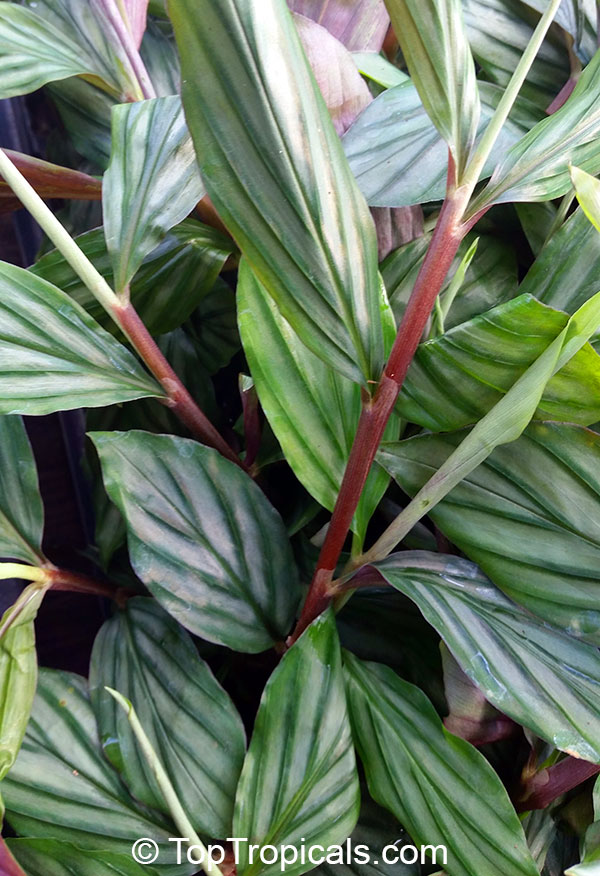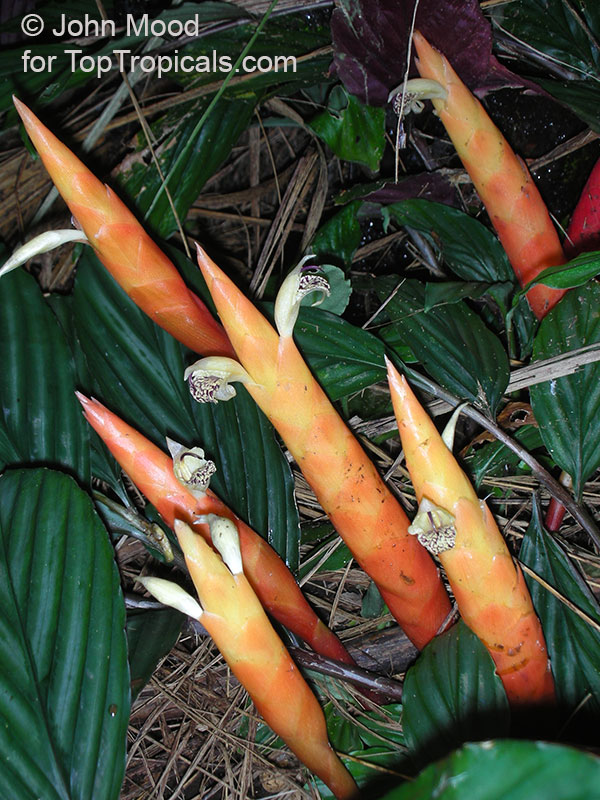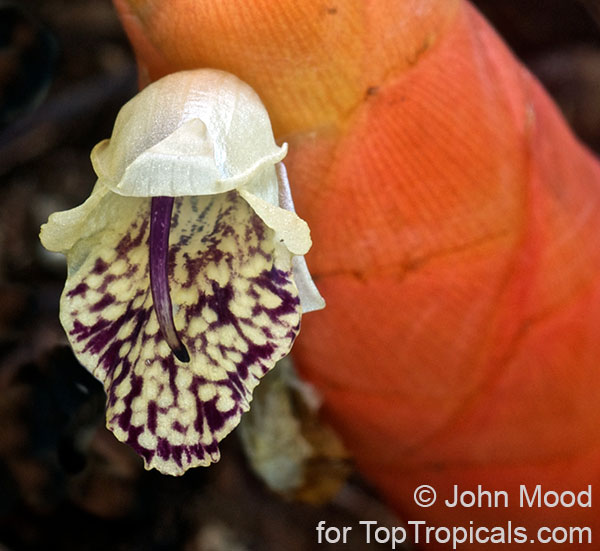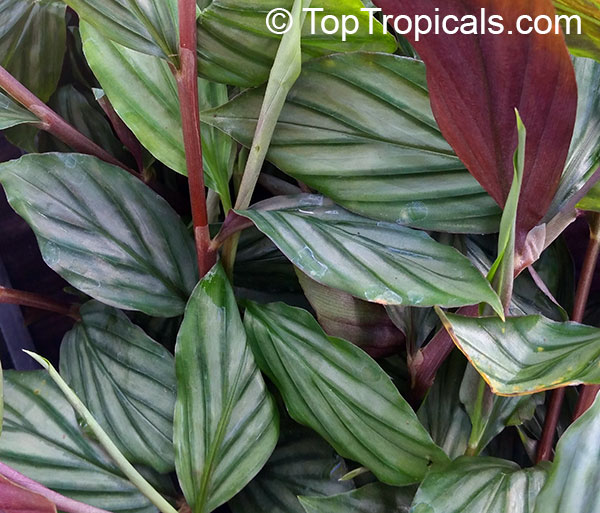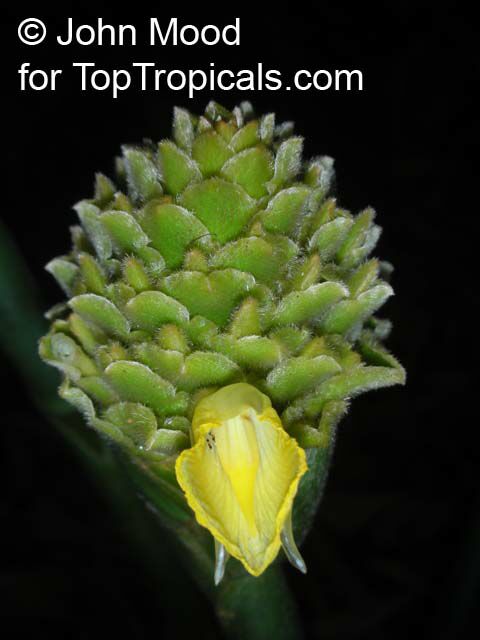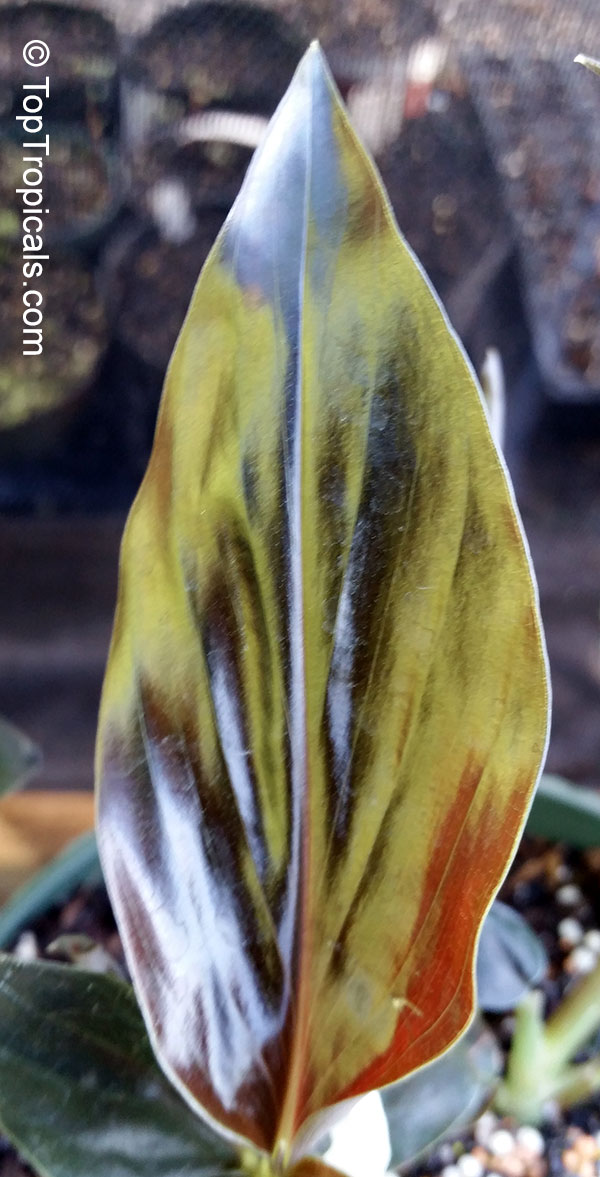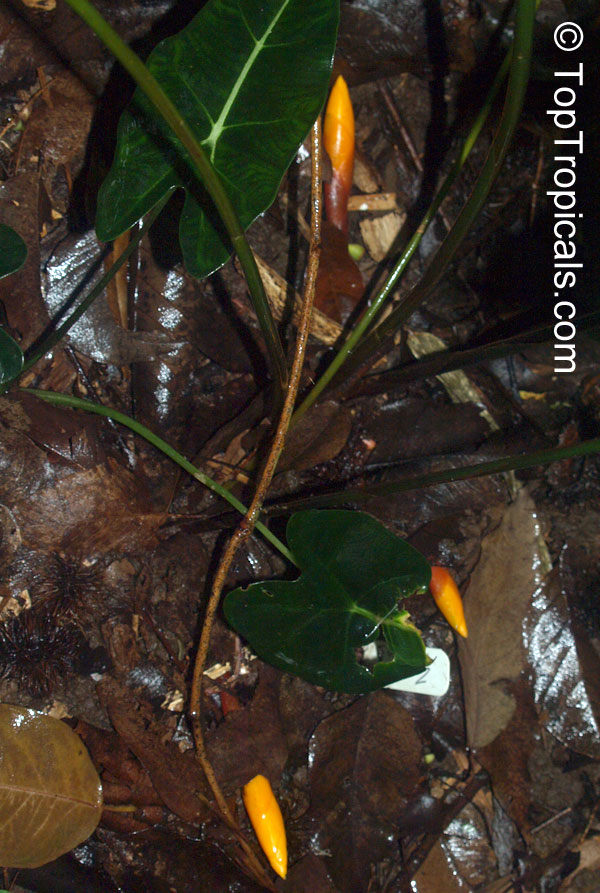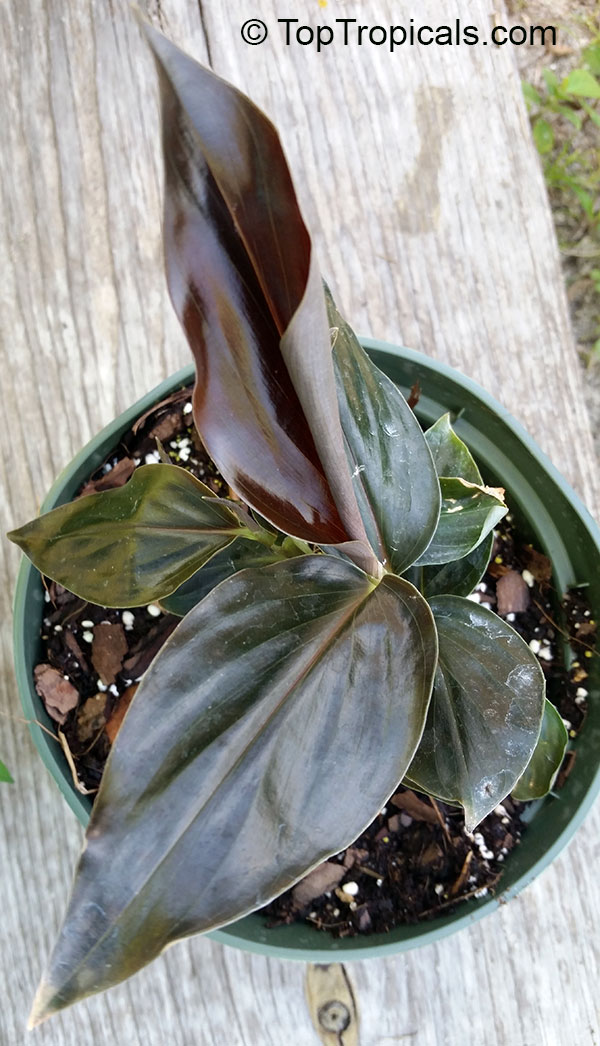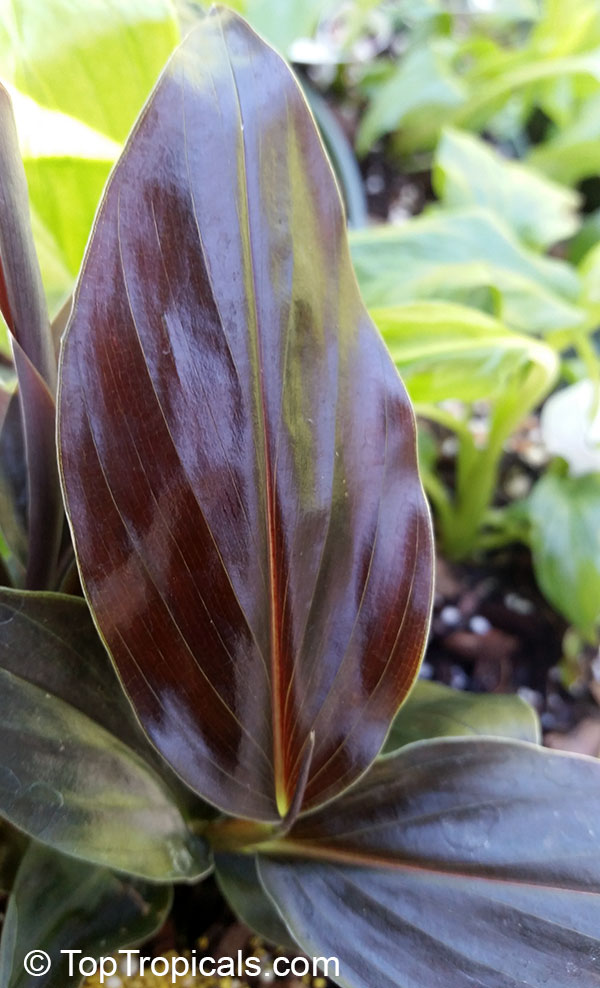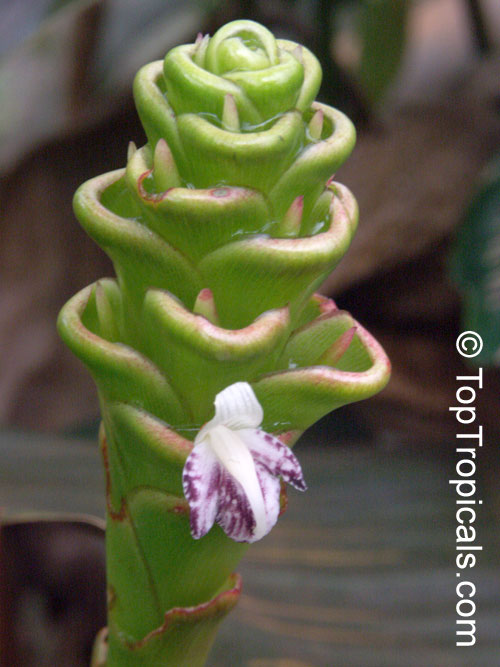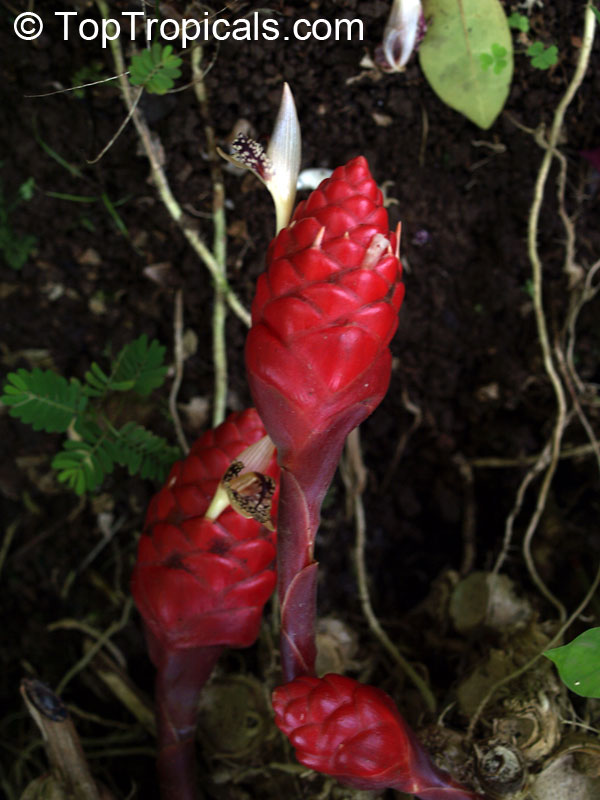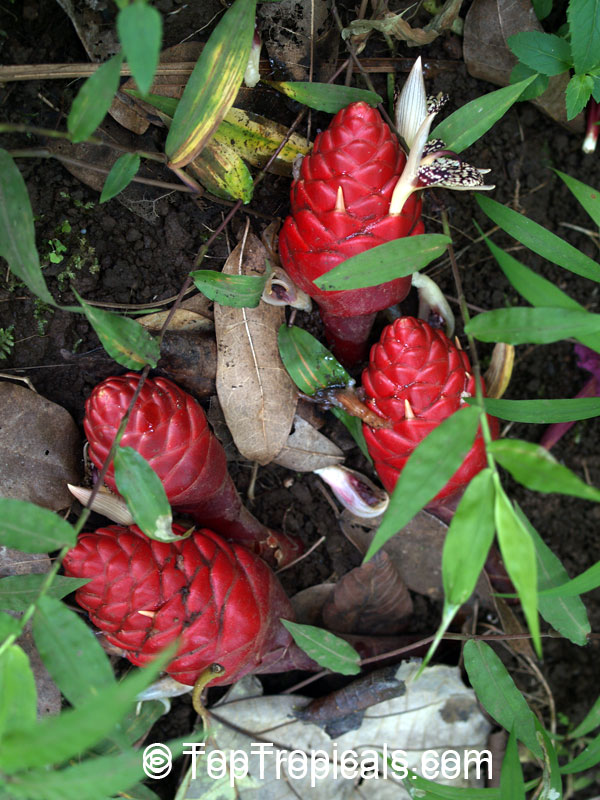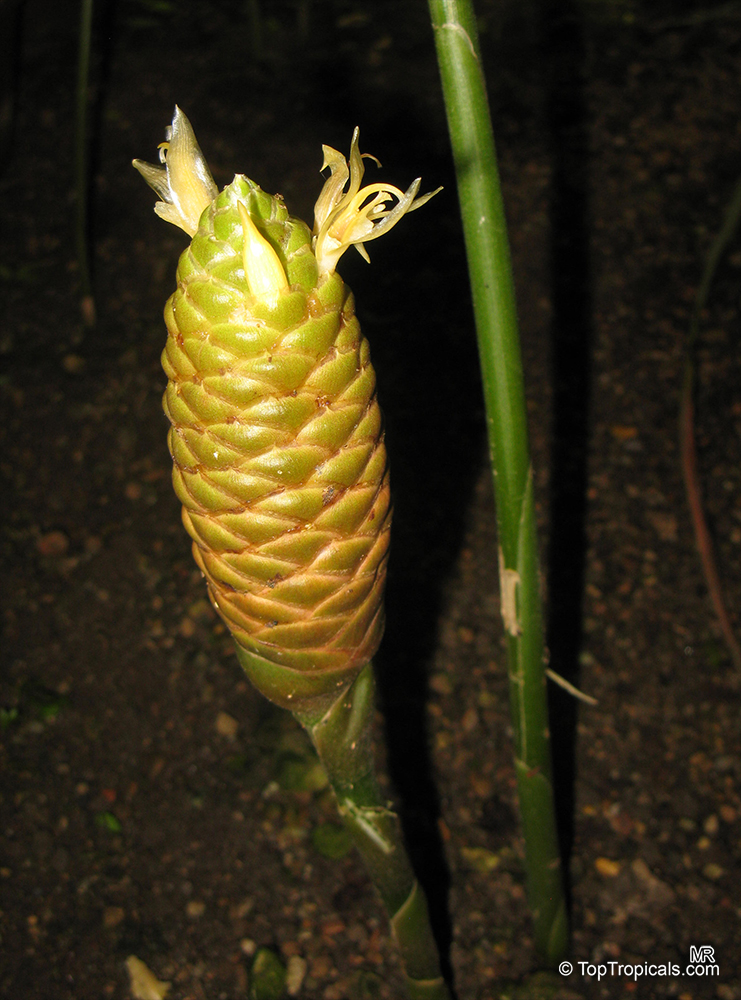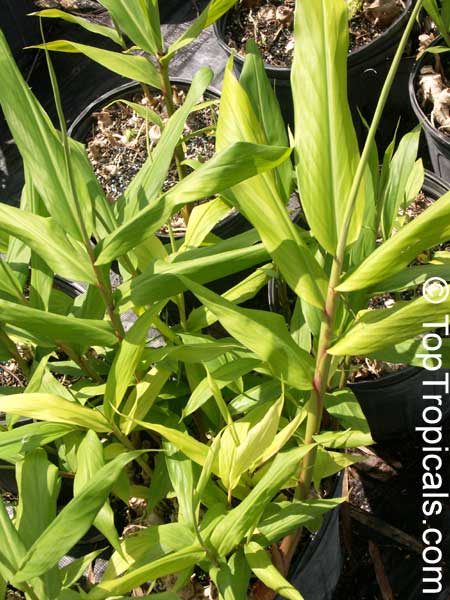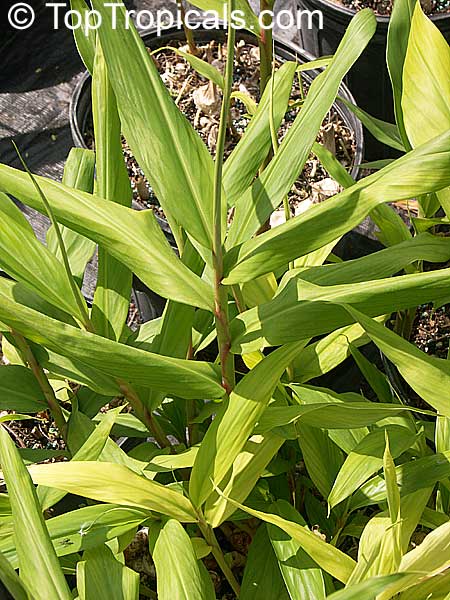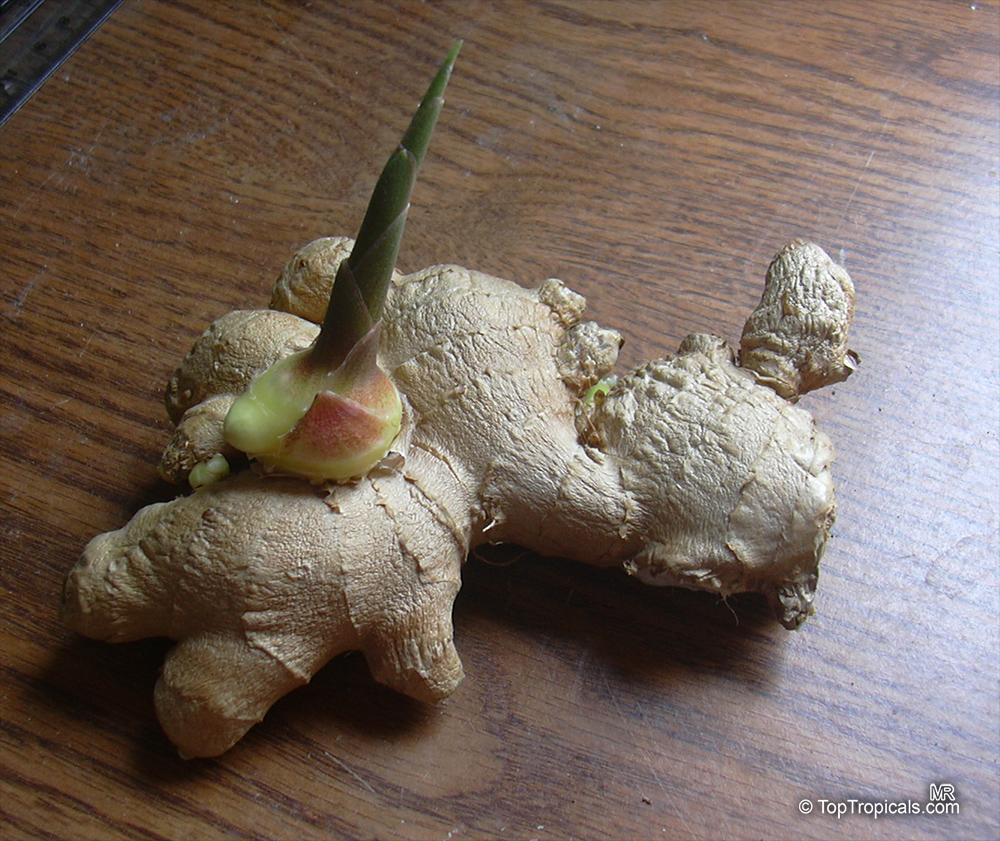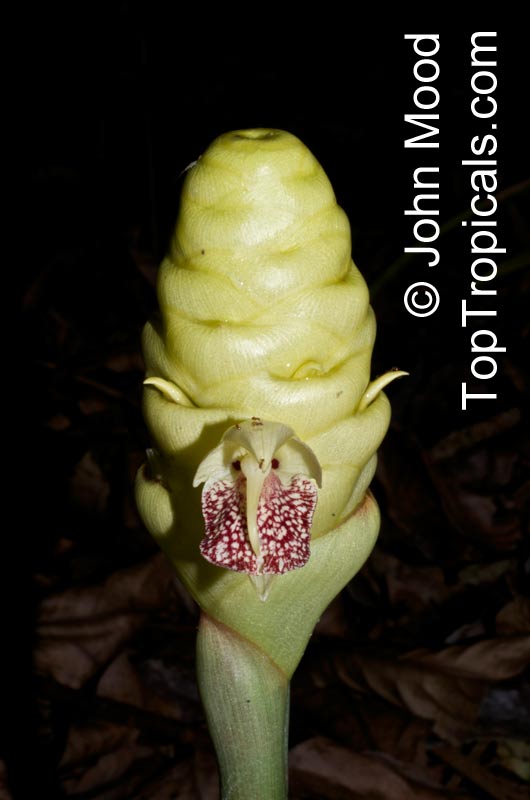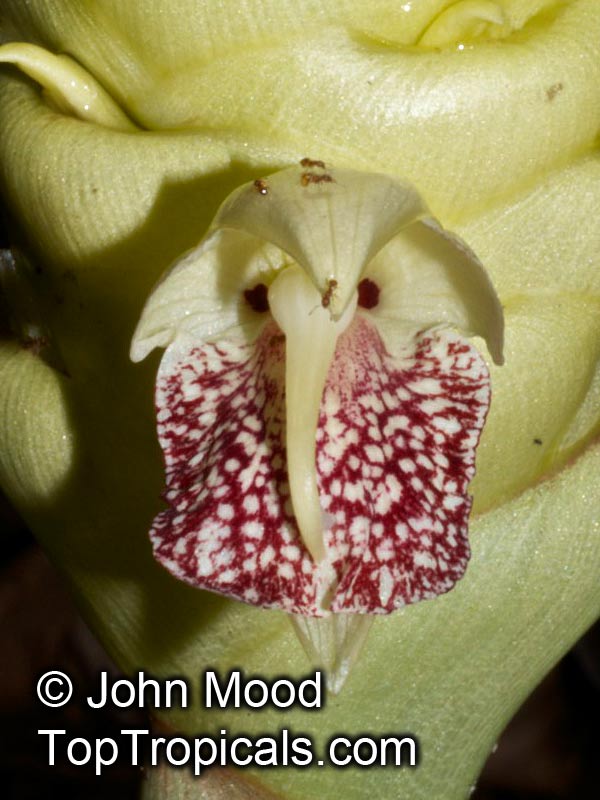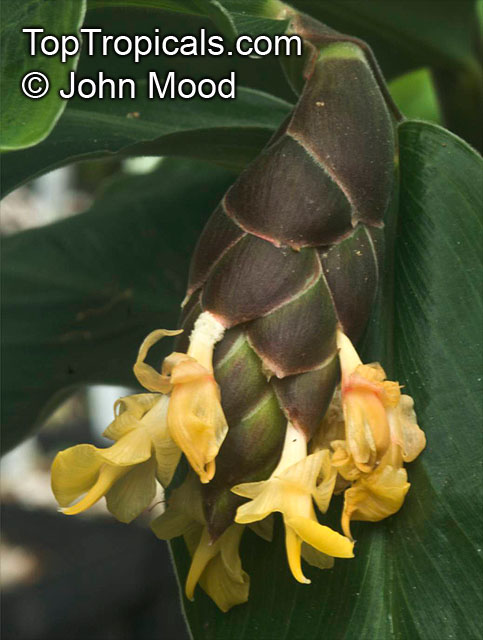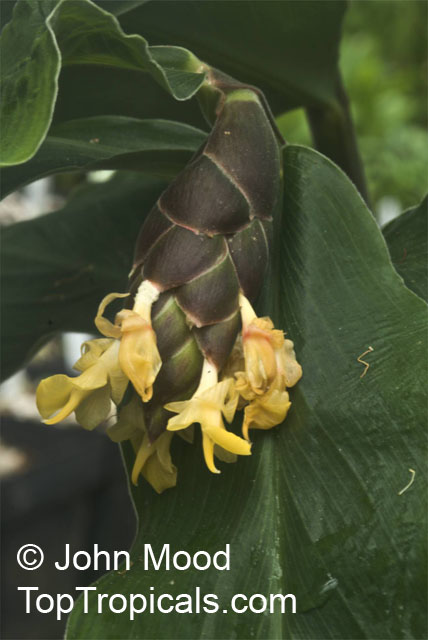Zingiber - Plant Encyclopedia Results
Top Tropicals Plant Encyclopedia
| Number of plants found: 75 | Next | 
|
Go to page: | 1 | 2 | 3 | 4 | 5 | Last |
Botanical names: Alpinia gigantifolia, Zingiber gigantifolium
Common name: Red Ginger Lily
Family: Zingiberaceae







Botanical name: Zingiber collinsii
Common name: Ginger Silver Streaks
Family: Zingiberaceae
Origin: Vietnam, Cambodia








This species is distributed from southeastern Viet Nam to the south of high central Viet Nam and extends to the eastern parts of Cambodia. Though rather common in southeastern Viet Nam, this species has only recently been described. The species is listed as Vulnerable. Species Authority: Mood and Theilade. In Pham (2003) this species is misidentified as Zingiber acuminatum.
The foliage is stunning. Its really a show stopper in the yard. Grows in shady places in evergreen to semi-evergreen forest undergrowth. Usually found as single plants, but rarely forming large clumps.
Botanical name: Zingiber malaysianum
Common names: Black Ginger, Midnight Ginger
Family: Zingiberaceae
Origin: Malaysia





Zingiber malaysianum, more commonly known as Black ginger or midnight ginger, is a small plant native to Malaysia. Growing between 2 and 5 feet tall, it requires semi-shade and regular watering to thrive. The ornamental foliage, which is a glossy deep purple-bronze in color, pairs nicely with its yellow and orange flowers in the spring and summer periods.
This semi-tropical plant is hardy to USDA Zones 9-11 and can tolerate mature temperatures of at least 30sF for a short time. When growing Black Ginger in colder regions, special care should be taken to ensure its winter survival. Planting the shrub in a container and then bringing it indoors during colder months is often recommended, as this will give the plant a greater chance at withstanding freezing temperatures.
In addition to being brought indoors during colder months, the plant must be provided with plenty of light and humidity. The soil should remain damp enough to support growth but should also be able to dry out slightly between waterings. During dry spells, Zingiber malaysianum should be watered more frequently, as it does not like to become too dry. In the summer months, additional fertilization is recommended to give the shrub a boost of nutrients and to promote healthy growth.
Overall, Zingiber malaysianum is an easy-to-care-for shrub, requiring semi-shade, regular watering, and protection during cold winter months. With its striking, glossy foliage and yellow and orange flowers, this small shrub adds both beauty and color to any garden.
Botanical name: Zingiber neglectum
Common name: Jewel Pagoda
Family: Zingiberaceae





Zingiber neglectum works well as a tropical foliage plant or patio plant. This variety produces an excellent, long-lasting cut flower. Propagated by division, stem cuttings and seeds.
Botanical name: Zingiber newmanii
Common name: Red Frogs Ginger
Family: Zingiberaceae
Origin: Malaysia





Botanical name: Zingiber officinale
Common names: Spice Ginger, Edible Ginger, Common Ginger, Cooking Ginger, Canton Ginger, Halia
Family: Zingiberaceae
Origin: tropical Asia











This ginger has tall, erect stems with narrow leaves, this basal bloomer produces green cones that turn red when mature. It is a herbaceous perennial with upright stems and narrow medium green leaves arranged in two ranks on each stem. Ginger grows from an aromatic tuberlike rhizome (underground stem) which is warty and branched. The inflorescence grows on a separate stem from the foliage stem, and forms a dense spike. The bracts are green with translucent margins and the small flowers are yellow green with purple lips and cream colored blotches. Most of edible gingers in cultivation are sterile cultivars grown for the edible rhizome, and the flower is rarely seen. Ginger is often grown in a container and brought indoors in winter when water and light are reduced and the plant is allowed to "rest." Common cooking gingers are rarely found in garden centers as potted plants because they do not have much ornamental value. Plant this ginger in the garden to produce your own fresh ginger.
Botanical name: Zingiber parishii
Common name: Lemon Lights
Family: Zingiberaceae
Origin: Thailand





This is the smallest of the beehive gingers.
| Next |  |
Use link to repeat this search:
https://toptropicals.com/cgi-bin/garden_catalog/cat.cgi?find=Zingiber&search_op=and&keyword_op=and&language=e&number=10
&no_change_lang=1&user=tt&sale=1&first=0
